
COCKROACHES
Click on a species of cockroach below to learn further information.
THE ADVENT OF THE COCKROACH
The Romans called the cockroach blatta and lucyuga for its habit of fleeing from the light. Our English term "cockroach" comes from the Spanish word "cucaracha." There is little agreement as to the country or origin where cockroaches originated. There is close to unanimous agreement that they have come from the tropics. They have come over to America as stowaways on ships from various parts of the earth and their ability to re-infest areas despite advances in the pest control industry leave little doubt that they will ever go extinct anytime soon.
Cockroaches are unwanted by humans due to the fact that they devour food, which it is believed they discover primarily through their sense of smell. They are of extreme importance in bakeries, butcher shops, hotels, private homes, ships, and various localities where humans live and work. They live in or near drains, cracks or wooden store fixtures, hot water pipes, moist kitchen sinks, behind stoves and refrigerators, and under meat chopping blocks.
All cockroaches are omnivorous. They mainly feed on starchy foods such as cereals, meat products, and sweetened or sugary substances. Some of the common substances upon which they feed include beer, cheese, leather (such as that found in upholstered furniture), hair, wallpaper, and dead animals. They eat books; especially those soiled with perspiration, and may feed on the binding of books in order to get to the paste behind the binding. Interestingly enough, they may even be found in greenhouses where they will feed on various plants.
COCKROACH BIOLOGY
Humans have what is known as an endo-skeleton, or simply a skeleton on the inside of the body. Humans are equipped with arm bones, head bones, leg bones, and backbones that are covered with a layer of muscles, a layer of fat, and a layer of skin. Insects, including the cockroach, have what’s called an exo-skeleton. Cockroaches do not have bones inside their bodies, insted they have a skeleton made of plates on the outside of its body. The cockroach skeleton resembles a suit of armor which covers the entire insect. Unlike bone that is made of collagen and calcium, the cockroach exo-skeleton is made of a substance known as chitin. Chitin is a hard material covered with a wax—like layer which helps conserve the water inside the insects’ body.
An insect’s body is divided into the following body parts:
- Head - consists of one pair of jointed antennae.
- Thorax - has three pairs of jointed legs.
- Abdomen
| Pests That Are NOT Insects: |
|
| Mice & Rats | Has an endo-skeleton instead of an exo-skeleton |
| Snails | No legs and has no division of body parts |
| Sow Bugs & Pill Bugs | Two pair of antennae (not one); seven pairs of legs |
| Spiders | Two main body parts (not three) |
| Ticks | Two main body parts (not three); eight legs (not six) |
A pest may only be classified as an Insect when it contains the following Characteristics:
- An exo-skeleton (outside the body)
- Three divisions of the body (head, thorax, and abdomen)
- A pair of jointed antennae on the head &
- Three pairs of jointed legs.
THE HEAD OF THE COCKROACH
There are three structures on the head of an insect to which we should pay particular attention:
- Antennae
- Eyes
- Mouthparts
1) ANTENNAE
Knowledge of what the antennae of various insects look like can help us in the identification of that insect and can separate quickly some types of insects that look alike to the untrained eye. For instance, a homeowner may experience a flight of insects within her home and she may want to know right away if these creatures are carpenter ants or termites. A trained service technician knows right away that a carpenter ant has elbowed antennae and that a termite has antennae that are moniliform (like beads strung on a wire) in shape and extend straight out from the base to the tip. The segments of an ant’s antennae are elongated and not bead—like as in the case of the termite.
The confused flour beetle is difficult to distinguish from the red flour beetle unless one looks at the distinguishing characteristics of their antennae. Drugstore beetles and cigarette beetles can be distinguished as well via knowledge of their distinct antennae features. The long horned beetle derives its name from the antennae which extend back beyond the end of its abdomen and look like a pair of long horns.
Antennae are a very important aspect of insect anatomy. They are typically covered with very tiny fine hairs and help the insect to feel their way around the environment in which they live. Its sense of hearing and smell are also in the antennae (an exception to this rule is the cricket which contains its "eardrums" on the front of its legs). Ants use their antennae to follow the trails laid down earlier by a lead ant that has dropped a drop of perfume—like chemical (pheromone along the trail at certain intervals. The ants follow the trail left behind through "smelling" the perfume left behind by the lead ants. If one were to cut off the insects antennae, it would be the equivalent of cutting off a human’s nose and plucking out his eyes. It would lead to great confusion and handicap the insect severely.
Antennae are important in that they help the cockroach:
1) Communicate with other cockroaches.
2) Taste food materials (recognition by taste).
3) Follow pheromone trails (via scent).
4) Recognize previously used cockroach harborages by smelling the previously deposited fecal matter.
2) EYES
There are two distinct types of eyes to be found among the many kinds of insects: a) Ocelli or simple eyes and b) Compound eyes.
Simple eyes are little more than simple light receptors that are able to differentiate between different light intensities. They can detect a shadow that has been cast over them by a predator and thus be alerted to danger. Spiders are not insects — but they are a good example of pests with simple eyes. Some spiders have six eyes and others have eight. The black widow has eight simple eyes arranged in two rows of four in each row.
Compound eyes consist of the surface of the eye that is broken up into hundreds of tiny sis-sided lenses, each of which is viewed by such an eye is similar to a tile mosaic. This type of eye does not permit crystal clear vision, but it definitely recognizes the movement and changes of light intensity. The male housefly has compound eyes that are close together and can be distinguished from the female fly which has its eyes spread wide apart.
The cockroach has compound eyes. They extend over the top front of the head (high forehead and top of the head) and down both sides of the head halfway to the mouthparts. They look sort of like a marine with a crew cut and long side burns. The compound eyes allow the cockroach to see backward, frontward, sideward, and upward, however, not with much clarity.
3) MOUTHPARTS
There are three commonly occurring types of mouthparts among insects:
1. Piercing, sucking (biting stable fly, fleas, mosquitoes)
2. Lapping, sponging (common housefly)
3. Biting, chewing (yellow jackets, earwigs, carpenter ants, termites)
Some insects are equipped with piercing, sucking mouthparts that pierce plant stems and leaves and suck plant juices (e.g. Aphids and scale insects). The biting stable fly, fleas, and mosquitoes pierce animal skin and suck blood. As they drive their needle-like mouthparts into the skin they inject saliva which contains an anticoagulant (incidentally, the antidote for all anticoagulants is Vitamin K) — to keep the blood from clotting during the feeding period. The saliva has a protein in it to which humans are allergic. As the allergic reaction sets in, the tissue around the "site" begins to swell. The swelling is simply designated as a flea bite or mosquito bite. A person receiving such a bite will scratch the area due to the sensation of itching caused by the swelling of the tissue.
When a flea feeds, it engorges itself with the blood of its host until the blood drops out of the posterior of the flea. These droplets have passed through the alimentary canal and intestines of the flea and contain any disease organisms the flea may have been carrying in its intestines. The human then scratches these blood droplets right into the open wound caused by the flea mouthparts. Typhus fever and the plague are transmitted by fleas in this manner. Mosquitoes transmit diseases such as yellow fever, encephalitis, and malaria through the use of their piercing and sucking mouthparts.
An example of an insect that has lapping, sponging mouthparts is the common housefly. These mouthparts look like a retractable "elephant’s trunk." When landing on a dry surface (such as a sugar cube) to feed, the housefly first vomits a liquid down its trunk and uses the sponge to wet the surface and dissolve some of it. The dissolved material is then taken up through the same procedure. This tendency for the fly to bring up liquid material is the clue to the method by which it transmits disease. The fly has a wide range of food from which to obtain its liquid nourishment — al_l the way from exposed fecal material to the contents of your dinner plate. Enteric diseases like summer diarrhea are transmitted by the lapping, sponging mouthparts of the common housefly.
Biting, chewing mouthparts are very commonplace in the insect world. Yellow jackets use their biting, chewing mouthparts to excavate ground nest cavities and to chew cellulose debris to form a pulp for building nests or to gather meat to feed to their larvae - (the adults feed only on the liquid sweets).
Earwigs have biting, chewing mouthparts which they use to eat their way into fruit such as apricots or to mar plant leaves and stems. They also use these mouthparts to clear away cavities for egg laying and to handle their eggs, once laid. Wood boring beetle larvae and adults have biting, chewing mouthparts. The larvae use their mouthparts to extend their workings in the wood.
Carpenter ants eat only liquid sweets but have biting, chewing mouthparts which they use for defense and offense, for transporting their eggs, larvae and pupae, for extending their exactions in the wood, etc. Termite nymphs and workers have biting, chewing mouthparts used in much the same way as carpenter ants’ mouthparts. They are elongated and scissor like and adapted for defense of the colony to such a degree that the soldier termite cannot feed itself but must be fed by the nymphs of the colony.
The mouthparts of termite nymphs and of those of cockroaches are very similar in composition. Both the termite and the cockroach have unique "teeth" used to rip up the food from the surface on which they are standing and both have surfaces to grind up the food before "swallowing" it.
THE THORAX
The thorax consists of all the muscles that give the insect the strength to move. All adult insects have six jointed legs and many adult insects have four wings — all legs and wings are attached to the thorax. The legs of different species vary in shape and size and include distinctive features. Ticks have a hook on the end of their feet which helps them to cling to the host. The hind pair of legs on the flea are significantly distended and are responsible for the fact that the flea can leap twenty times his own length. Flies’ feet are adapted by being equipped with a sticky pad which enables them to walk on the ceiling upside down, and a pair of hooks that allows them to cling to rough surfaces.
Upon close scrutiny the foot of a cockroach reveals a pair of hooked claws which enable it to scurry upwards across a fabric surface or maintain a steady footing on various rough surfaces. The same close-up look will divulge _a sequence of five sticky pads on the foot of the cockroach which allows it to climb up over the polished metal flashing in back of the stove in a restaurant kitchen, or up over glass, or up the walls and across ceilings. There are few places that the cockroach cannot go. It is these same sticky pads that collect and spread various diseases.
Numerous insects have four wings (two pairs). The wings are always attached to the second and third segments of the thorax. The termite swarmer, for example, has four wings of equal length which gives rise to the name of the order of insects to which it belongs — "Isoptera" (‘Iso’ meaning equal & ‘ptera’ meaning wing in Greek). The majority of butterflies and moths have four wings and on these wings are scales arranged into patterns that enable one to identify the butterfly or moth. Beetles have four wings. The first or outer pair is usually thickened into a protective sheath and the second pair, folded under the outer sheath, is membranous and used for flight.
The external pair of wings of rice weevils have a sequence of light colored spots on them which distinguish them from granary weevils. Rice weevils can fly — granary weevils cannot. Cigarette and drugstore beetles have hard outer wings and membranous under wings. The parallel lines (striations) on the outer wings enable one to tell the difference between these two look-a-likes.
Fleas do not have wings and are therefore, known as "apterous" — ‘a’ meaning without and ‘ptera’ meaning wing. Adult carpet beetles have wings and frequently fly from bush to bush outside of the house and from cut flower to egg—laying site inside of the house. Carpet beetles are notorious for infesting woolens, dried flowers, or bird nests. If the inspector is trying to find an infestation of carpet beetles a good starting point would be near window sills and by sliding glass doors. The reason the carpet beetles are near window sills and sliding glass doors is because they are seeking outdoor food sources like pollen and nectar. Spraying is an excellent method of control for ground beetles and should be used as an exterior barrier in non-irrigated soil.
Flies belong to the order "diptera" — ‘di’ meaning two and ‘ptera’ meaning wing. Thus, flies have two wings. The second set of wings called "halteres" help the fly to balance his flight. The reproductive castes of ants have four wings but unlike termites, the second set of wings is only half to three quarters as long as the first set. Earwigs have two pairs of wings —— the first pair being formed into a thickened sheath and the second pair very cleverly folded in three directional fold beneath. A Cockroaches have wings. American and brown banded cockroaches are both capable of flight. German and Oriental cockroaches do not fly. A look at an adult Oriental cockroach will tell you why. The wings on an adult male Oriental roach extend only two thirds of the way down the length of the abdomen. The wings on the adult female Oriental cockroach are merely stubs — the wings of both the male and the female Oriental cockroach are incapable of supporting the heavy bodied cockroach in flight.
The third major feature of the thorax of an insect is thoracic spiracles or entrances to the breathing system of the insect. These spiracles look like portholes in the sides of the insect and extend from the second segment of the thorax backwards through most of the segments of the abdomen — two spiracles on each segment — one on each side. The port holes are connected to tubes which extend throughout the body of the insect, becoming smaller and smaller as they branch away from the spiracular opening. The larger tubes are known as trachea and the smaller tubes are known as tracheoles. The whole system looks like a series of tree trunks and all of their branches. Air enters the spiracles and travels by diffusion through the tubes to all parts of the insect’s body. The spiracles have muscles surrounding the openings so that they can be closed off at will to help prevent dehydration. This type of breathing system is quite different from man’s blood system. The series of portholes, I or spiracles, along the side of an insect can also serve as entrance ports for insecticides whether in a gaseous form or in the form of fine spray droplets, particularly when they are only a few microns in diameter.
The thorax of the cockroach serves as a key for the purpose of identification. The light areas on the side of the prothorax of the American cockroach distinguish it from other roaches. The parallel dark streaks ("hash marks") on the prothorax of the German cockroach differentiate it from the brown banded cockroach The thorax of the cockroach also contains a nerve ganglion which sends impulses to the leg muscles.
THE ABDOMEN
The abdomen of an insect generally has ten segments. Located at the end of the abdomen of some insects is a pair of appendages known as cerci (singular — circus). In the case of earwigs, these are "pinchers" I which the earwig uses as a pair of forceps to move its eggs around in the nest — like cavity in the leaves or to capture food such as tender young termites and to hold them while chewing off their heads.
The cerci of cockroaches perform an entirely different function. The bottom side of the cerci is covered ` with fine hair. When held in an upright position, these cerci serve as early warning "radar scopes". Any change in the air movement in the room, such as would be caused by opening a door, is detected by the fine hairs on the cerci. A sensory nerve impulse moves from the hairs to the thoracic nerve ganglion which sends out a motor nerve impulse to the legs telling them to run like blazes. Thus, the cockroach escapes the potential danger indicated by a change in the air motion without the brain being involved at all.
This then, completes a review of some of the external structures on the body of an insect- a knowledge of which will aid in control measures:
1) Antennae
2) Eyes
3) Mouthparts
4) Legs
5) Wings
6) Spiracles
7) Cerci
Insects go through distinct changes as they develop -into adults and this process is known as metamorphosis. The process of growing from egg to adult is known as the life cycle of the insect. There are several distinct variations in the life cycles of insects. In reference to pest control there are two primary types of life cycles to be considered here:
1) The Complete Life Cycle, and
2) The Incomplete Life Cycle (sometimes called "gradual" metamorphosis, or "no" metamorphosis).
The common fly is a good example of an insect that has a complete life cycle. The larva (called a "maggot") does not resemble the adult fly in any way. The change from larva to adult takes place in the pupa stage. Fleas also have a complete life cycle. The larva looks like a caterpillar without legs. They have biting, chewing mouthparts and eat decaying organic debris (pieces of skin, dried blood, etc). The adult flea, on the other hand has piercing, sucking mouthparts and eats only liquid blood. All ants have a complete life cycle. The ant larva is a white grub—like immobile creature that must be tended and fed by the adult. All beetles have complete life cycles. The grub—like larva of the_cigarette beetle, for example, is responsible for major damage to stored foods while the adult eats little or nothing at all. All moths have a complete life cycle. The larva of the naval orange worm moth is one of the most destructive of all of the stored food product pests while the adult moth doesn’t eat at all.
The simple or incomplete life cycle consists of three stages:
1) Egg
2) Nymph, and
3) Adult
One of the pertinent facts about insects that have an incomplete life cycle is that the nymph that hatches from the egg has the general appearance of the adult and develops the same habits, habitats, food preferences, etc. Thus, all stages after the egg resemble the adult except that they are not fully developed.
An example of insect with an incomplete life cycle is an earwig. There are four nymphal stages (also known as "instars") between the egg and the adult. Each stage looks like an earwig, acts like an earwig, eats like an earwig and in fact, is very similar except in size and sexual maturity to an adult earwig. Silverfish and body lice have an incomplete (simple) metamorphosis. Termites have an incomplete or gradual metamorphosis. The nymphal stage has seven instars, each a size larger and more mature than the previous instars.
Side Note: Earwigs are typically found where there is much debris and organic material present. The best way to know if earwigs have been controlled after treatment is if no new reproductive activity has been observed.
Cockroaches have an incomplete life cycle - egg, nymph and adult. Young cockroaches closely resemble older cockroaches of the same species. The young cockroaches are found in the same habitats as the older cockroaches, eat the same food and contaminate man’s food just as efficiently.
It is interesting to notice the different ways that pest take care of their eggs. Termite queens lay their eggs one by one in a chamber of the termite colony. The eggs are cared for by the nymphs or workers of the colony. Black widow spiders lay their eggs into egg sacs which they construct from the same material they use for webbing. An egg sac may contain as many as 1,000 eggs. The spider lings hatch within the egg sac and bore their way to the outside world. Carpenter ant queens lay their eggs within a chamber of the ant colony and the eggs are carefully cared for by the workers of the colony. Clothes moths and carpet beetles lay their eggs on the fabric that the young larva will eat upon emerging from the egg. Head lice, crab lice and body lice stick their eggs to the hairs or clothes of the host. Case making meal moths have a tendency to use old woolen blankets to lay their pupae. Houseflies, lesser houseflies, green bottle flies and flesh flies lay their eggs in batches on the garbage, manure or dead animal that the larva will eat upon emerging from the egg. Cockroaches produce "egg capsules" and the embryos develop within these capsules. Cockroach species can be distinguished by the size and shape of their capsules and the number of embryos which they contain. Of the five species of cockroaches that we’ll be discussing, the brown banded cockroach produces the smallest capsule and the Oriental cockroach, the largest. The German cockroach is long and slender and contains twice as many embryos as the other four species.
Species of Cockroach
- Number of Eggs in Capsule
- Hatching Time
- American cockroach
- 10 to 20
- 5 weeks
- Brown banded cockroach
- 10 to 20
- 4 weeks
- German cockroach
- 30 to 40
- 3 weeks
- Oriental cockroach
- 10 to 20
- 8 weeks
- Smoky brown cockroach
- 20 to 30
- 5 weeks
It is important to remembers that the German cockroach deposits its egg capsules on a flat surface just before the young cockroaches are ready to emerge while the brown bandedcockroach “sticks" its egg capsule to the underside of a surface (under the seat of a chair, under the table top, under the bottom of a drawer, on the back side of a picture frame, etc.) As the embryos inside of the cockroach egg capsule mature and they are ready to emerge to the outside world, they exert an internal pressure on the capsule which bursts open along the top seam and releases them. Some cockroach egg capsules look like fly pupae to the untrained observer. Place American or Oriental cockroach egg capsules side by side with the pupal cases of green bottle flies and note the difference. This is important to observe on a first hand basis because fly pupae can occur in a restaurant in some of the same places that cockroach egg capsules can be found.
The tiny little cockroach (first instar nymph) that emerges from the egg capsule has an exo—skeleton (a skeleton on the outside of the body) similar to a suit of armor. It cannot grow larger without shedding this exoskeleton and emerging from the cast skeleton with a new skeleton which is a size larger. It is then known as second instar nymph. After a period of time, this exoskeleton is shed and the nymph goes into its third instar stage. This shedding of the exoskeleton takes place at intervals until the cockroach finally reaches sexual maturity. The time span for this process varies from species to species. As the nymph molts its skeleton and the next stage emerges, it is white in color. In a relatively short period of time, the exoskeleton dries and hardens and takes on the typical coloration of the species. Almost every new service technician has excitedly proclaimed that he has found an albino cockroach — when in fact, he has merely discovered a cockroach nymph which has recently molted its exoskeleton.
The subject of biological potential plays a role in cockroach control. Biological potential is merely the potential number of cockroaches that can be produced over a given period of time starting with one female and one male. We know that an American cockroach can produce ninety egg capsules in a lifetime and that German cockroaches may produce four to eight capsules in a lifetime, Oriental cockroaches — eight to fifteen capsules and brown banded — an average of fourteen capsules in her lifetime.
For the purpose of illustration of variability of biological potential between cockroaches however, let us assume that each pregnant female produces only one egg capsule. It takes one year for American and Oriental cockroaches to proceed from egg stage to mature adult. Thus, one could expect fifteen mature American or ‘ Oriental cockroaches per year starting from one egg capsule. A brown banded cockroach matures in six months. Thus, in six months, there could be fifteen mature adults, (eight females and seven males for the sake of illustration). Each female in our example could produce an egg capsule and by the end of the year, there could be 8 x 15 = 120 mature brown banded cockroaches — eight times as many as with either American or Oriental cockroaches. The significance of this process becomes evident when we consider German cockroaches. The developmental period takes only three months for the German cockroach. Thus, beginning in January with an egg capsule, one could expect thirty mature German cockroaches by March. lf fifteen of these were female, one could expect 450 mature cockroaches by June. lf half of these were female (225 x 30), one could expect 6,750 mature cockroaches by September. lf half of these were female (3,375 x 30), one could expect 101, 250 by the end of the year! And that could take place if each female cockroach produced only one egg capsule. One can readily see that the great biological potential of the German cockroach is one reason it is our number one cockroach pest.
Species of Cockroach --------------------------------- Month of Year -------------------------------- J F M A M J J A S O N D 1) American cockroach 15---------------------------------------------------------------------------------15 2) Brown banded cockroach 15------------------------------- 15 x 30---------------------------------------450 3) German cockroach 30----------- 30 15 x 30--------------450 225 x 30----------------6,750 3,375 x 30------------------------ 101,250 4) Oriental cockroach 15----------------------------------------------------------------------------------15 5) Smoky brown cockroach 15--------------------------------------------------------------------------------- 15
Cockroaches are nocturnal in habit. This means that they hide in a dark place (crack, crevice, void) during the daytime and come out at night to forage for food. Therefore, control measures applied directly to their daytime hiding places are most effective. Most cockroaches prefer a moist environment and none can afford to dry out by staying in a hot, dry environment for very long. Of the five species, the Oriental cockroach is most likely to inhabit very damp areas (in the basement, under the house, in the ground cover around the house, in the water meter box). All cockroaches are scavengers with a wide choice of food. All five species thrive on food that humans eat; All five species pollute human food in the process of feeding. We will focus on the five species commonly found in structures such as food processing plants, homes, restaurants, and warehouses.
Order: Orthogtera Genus: Species: Size: Markings: Flight:
American cockroach Periplaneta Americana 1 1/2” Reddish Brown Yes
Brown banded cockroach Supella longipalpa 1/2 inch Light stripes Yes
German cockroach Blattela germanica 1/2 inch Black Hashmarks No
Oriental cockroach Blatta orientalis 1 inch Black No
Smoky brown cockroach Periplaneta fuliginosa l 1/2 inch Smoky Brown Yes
COCKROACHES AS TRANSMITTERS OF DISEASE
It has been known for a long time that cockroaches hide in and browse around in filth — sewers - garbage — dirty areas. It has also been known for a long time that cockroaches also crawl over food preparing . surfaces and browse around on our food itself. It has been known that a cockroach can carry disease organisms on the hairs and bristles on its body as well as, on the sticky pads on its feet. It is also well known that cockroaches defecate on the food upon which they are eating. Cockroaches have been proven to transmit the E. coli bacteria, staphylococcus, and streptococcus, and are thus responsible for food poisoning.
COCKROACH CONTROL
It has been postulated by some individuals outside of the structural pest control industry that they concept of Integrated Urban Pest Management is a brand new concept to our industry and one which is resisted by our industry. On the other hand, it has been authoritatively asserted by respected members of our industry that Integrated Urban Pest Management has been practiced by the industry since day one and as a matter of fact, is an integral part of the everyday practice of structural pest control.
Unfortunately, there are those both inside and outside of our industry who, through ignorance or prejudice, confuse the concept of Integrated Urban Pest Management with the concept of biological control. Certainly, biological control can be under certain circumstances, an effective segment of an Integrated Urban Pest Management program, but it should hardly be the only segment to be considered. And many times under practical circumstances, has no place at all in a specific Integrated Urban Pest Management program primarily because of the nature of such a specific pest problem.
Because of the confusion, apprehension, frustration, charges and countercharges that sometimes creep into a discussion of Integrated Urban_Pest Management by groups, both within and outside of the industry, it is important to define the term Integrated Urban Pest Management (I.U.P.M.) as it applies to the structural pest control industry. Since the words, Integrated Urban Pest Management are well chosen and since each individual word has a particular significance, let’s take a brief look at them one at a time.
The word "Integrated" means to us that all of the applicable parts of the program are meshed together. If the word "homogenized" had been used instead, we would expect that all of the ingredients of this concept would be forcibly mixed together in one homogenous mass. Consider a homogenized bottle of milk. Every ingredient is forcibly mixed with every other ingredient until the individual ingredients have lost their identity and a new product has resulted. Not so with Integrated Urban Pest Management. The term "integrated" suggests that the applicable facets are brought together to produce the desired result. Perhaps cultural and biological control concepts just don’t fit. On the other hand, in another situation, the pest problem may be solved by integrating only cultural and biological controls and perhaps mechanical, physical, regulatory and chemical concepts would just not fit the situation. In another instance, perhaps all six facets of the program could be applied. So, Integrated Urban Pest Management means bringing together the applicable facets of this concept to arrive at a satisfactory control level.
The next word in the title is "urban". This word is derived from the Latin word, "Urbus" which means ‘city’. The word city, in most people’s minds conjures up a vision of masses of people, houses, crowded streets, commercial buildings, and other man—made structures. Structural Pest Control operators control pests in and around man—made structures of all sorts whether they are fish canneries, food processing establishments, granaries, restaurants, hospitals, individual family dwellings, apartments, movie theatres and the like. These structures tend to clump together into cities. Therefore, the word "urban" is a neat word — it identifies our industry and differentiates it from agricultural pest control, crop spraying and the like.
The third word is "management" and this is an interesting and perhaps, even scary word. Management does not necessarily mean annihilation or 100% kill. It means just what it says — management of the pest population to achieve a level of infestation that is acceptable to your customer and even perhaps, to your customer’s customer. On one hand, you may be confronted with the wild—eyed environmentalist type who might say that we have to learn to live with a few cockroaches — that eradication is not even desirable. On the other hand, you may be confronted with the irate hotel or restaurant owner who, despite your best efforts, has spotted a lone cockroach in his establishment and demands immediate action bent upon eradication. So the term, management, means bringing the pest population to a tolerable level — and you, as a structural pest control operator, had better be aware of what is tolerable and to whom — and especially hold in mind the tolerance level of the person who is paying the bill.
So, put it all together and you have Integrated Urban Pest Management. It is important to remember that the foundation upon which all Integrated Urban Pest Management rests is proper identification of the pest involved and a basic knowledge of its biology and in all of his dedication to Integrated Urban Pest Management, the structural pest control operator must constantly hold in mind that the uppermost thought in his customer’s mind is SAFETY and this means safety with whatever facet of the system is employed.
If a structural pest control operator wants to measure his efforts in Integrated Urban Pest Management, he may measure them against the yardstick of being profitable, energy conserving, environmentally sound, ecologically based, sociologically acceptable and technologically correct. Let’s investigate the aspects of I.U.P.M., cultural, mechanical, physical, biological, regulatory and chemical control and some of the examples of the use of each of these aspects for the purpose of gaining a more sound and professional approach to cockroach control.
The cultural control of the home should involve the replacement of low growing ground covers (ivy and the like) with a different type of landscaping that does not offer a harborage and favorable breeding conditions to Oriental cockroaches and Smokey Brown cockroaches.
Cultural control inside of a food processing establishment could involve the overall level of sanitation inside the plant. It could specifically involve the cleanup of the organic crud that forms layers under the refrigerator and/or stove, etc. and which renders the application of other aspects of I.U.P.M. difficult to worthless at best. It could involve the cleaning up of food that has been carelessly slopped anywhere in a restaurant kitchen or in the serving or dining area.
Physical control as it pertains to cockroach control outside of the home, could involve building out cockroach infestations to whatever degree that could be accomplished. Obvious habitats can be eliminated or relocated. For example, the removal of the trash burning and garbage storage areas from immediately adjacent to the back door or loading dock of a restaurant to some other convenient part of the property is an effort to put as much distance as possible, between the potential breeding site and the point of entry to the food establishment.
Physical control inside of food processing establishments can range all the way from sealing up cracks and crevices with Polycell—100 to denying access to hiding and breeding areas—to making the owner aware of certain changes he could make that would eliminate infestations of cockroaches. This could involve construction of cabinets and shelving in a manner to eliminate cockroach harborages or it might just mean installing the refrigerator on a concrete base rather than on a series of two by fours. Education of, and recommendations to, the food processing plant owners of items he could accomplish during his next renovation project could over the long haul, make cockroach control more feasible in a given plant.
Mechanical control can play a very important part in monitoring levels of cockroaches present in food processing plants through the use of sticky traps. These traps which are inexpensive and easy to use may not only indicate the presence or absence of an infestation, but also may indicate which area of the food plant has "hot spots" of infestation that can be taken care of by physical or pesticidal control. The concept of mechanical monitoring boards such as sticky board with or without an attractant could be made use of in our industry to a far greater degree than is in effect at the present moment. It probably would not be very smart to try to eliminate infestations of German cockroaches with sticky boards because of their territically prolific biological potential.
Biological controls for cockroaches in food processing establishments that are practical for Pest Control Operator are in short supply. There is a great need for further research in this area. Some I.U.P.M. proponents point to a project at the University of California at Berkeley in which the levels of populations of brown banded cockroaches in some of the labs and student housing buildings were decreased over a long period of time by the introduction of a parasitic wasp which was specific for Brown Banded cockroach egg capsules. In this euphoria, they tend to overlook the fact that restaurants and other food processing establishments are infested with German cockroaches not Brown Banded cockroaches and the owners of the establishment as well as, the Health Department representatives Want some measure of relief now — not two years from now. They tend to overlook the measures applied must be socially acceptable and thus, fail to understand why a restaurant owner might not want 20,000 parasitic wasps released into his establishment periodically.
One obvious answer is an educational approach. Inspections of the premises based upon legal requirements as well as, cultural and physical improvements and mechanical monitoring and the issuance of "sanitation inspection reports" requiring action on the part of the owner of the food processing establishment are gaining wide attention in the structural pest control industry. Many companies print up an inspection check list which indicates sanitation improvements to be made and leave this list with the owner or manager of the food processing establishment. Copies of the applicable local, state or federal laws governing the presence (or absence) or vermin in such an account can be stapled to such a report. Certainly it is good sense, for a pest control serviceman to make acquaintance of the Public Health Sanitarian into our confidence, educate them regarding sanitation problems relating to professional cockroach control and enlist their aid in solving some of our most stubborn cockroach infestations.
General Information for All Cockroaches:
- As a health precaution, the operator should inform the consumer that cockroaches carry the salmonella disease.
- Insecticides should always be placed directly or near harborages for greater effectiveness.
- The best way to maintain control of a cockroach problem is to do frequent inspections, surveys, and chemical applications (if necessary).
- Injecting aerosol flushing agents into cracks and crevices is an excellent means to use in follow—up inspections to determine the extent and locations of any existing harborages.
- If a chemically sensitive person lives in a home where cockroaches are a problem it is safest to use baits and traps for the health of the person.
- The best way to treat cockroaches in technologically sensitive areas is via the use of gel bait.
Click on a species of pest below to learn further information.
Having trouble with Pests?
Give us a call: 661-645-6855
Or have Traffic contact you today and get a FREE estimate for:
Your Neighborhood Bug Guys!
Traffic Pest Solutions (LA)
15828 Toscana Ct.
Santa Clarita, CA 91387
Phone: (661) 645-6855Santa Clarita, CA 91387

 German Cockroach
German Cockroach Oriental Cockroach
Oriental Cockroach American Cockroach
American Cockroach Brown Banded Cockroach
Brown Banded Cockroach Smokey Brown Cockroach
Smokey Brown Cockroach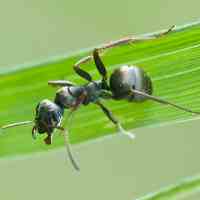 Ants
Ants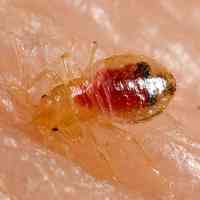 Bed Bugs
Bed Bugs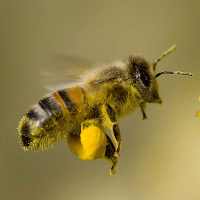 Bees
Bees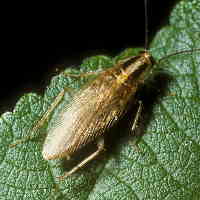 Cockroaches
Cockroaches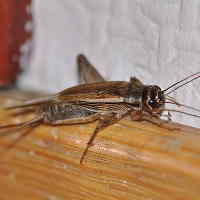 Crickets
Crickets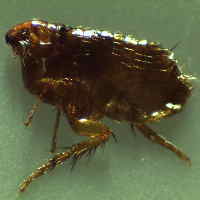 Fleas
Fleas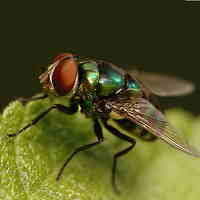 Flies
Flies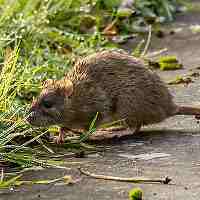 Rodents
Rodents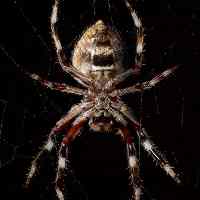 Spiders
Spiders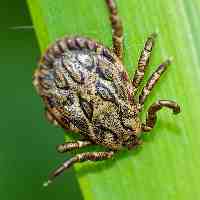 Ticks
Ticks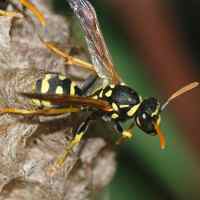 Wasps
Wasps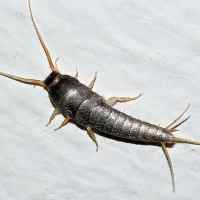 Silverfish
Silverfish